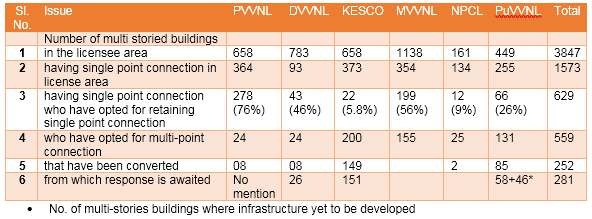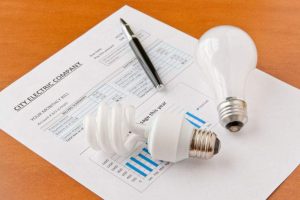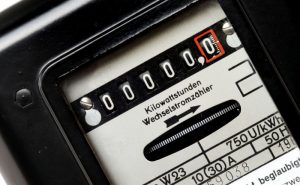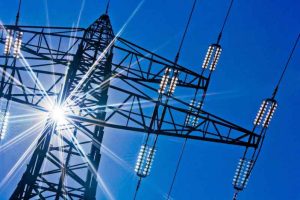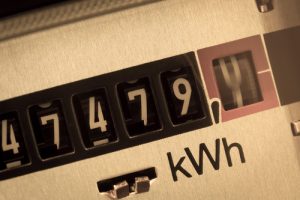Opt for a change of your electric connection from single to multi point in your multi-story society in UP
- Amendment No. 13
- Implementation Progress of Amendment No. 13
- Commission observation on manipulation by RWA/Builder
- What is a single-point connection?
- What is a multi-point connection?
- Tariff Order(2019-20) and saving to the consumer with a change from single to multi-point connection
- Technical issues involved in the change over from single point to multi-point connection
- Conclusion
The post is getting evolved based on the latest development and the likely revision in Amendment No.13 after the outcome of UPREC review meeting with DISCOM …..latest meeting held on 22nd July 2020 and orders issued on 5th Aug 2020.
Table of Contents
- Amendment No. 13
- Implementation Progress of Amendment No. 13
- Commission observation on manipulation by RWA/Builder
- What is a single-point connection?
- What is a multi-point connection?
- Tariff Order(2019-20) and saving to the consumer with a change from single to multi-point connection
- Technical issues involved in the change over from single point to multi-point connection
- Conclusion
Under clause no. 4.9 of the Supply code 2005, the Electric connection in the multi-story buildings/multiplex/Marriage Halls/colonies to be developed by the Development Authorities and/or Private Developers/promotes/colonizers/institutions/individual applicants. (Approved by Licenses Electrical Inspector) shall be provided at a single point but it shall not restrict the individual owner from applying for individual connection, and the licensee shall sanction the connection to such applicant.
With this being the provision in the clause, all connections by the private Developers availed at a single point only. The welfare society of Govt./PSU and small societies, in the beginning, availed multipoint connection. But later on, with the concept of township/city type housing society with 1000 and above apartments, the trend shifted to single-point connection to cater for high load for the common area and commercial units. Also, the language that ‘it shall not restrict the individual owner …’ does not define who is ‘individual owner’. Even if an owner applies for a separate connection, the same was not technically feasible since the infrastructure for single and multipoint cannot co-exist. Given this, it is but natural that trend shifted towards single-point connection and when it suited DISCOM also.
Amendment No. 13
Considering the flaw in clause no 4.9, wherein it was not possible for an ‘individual owner’ to apply for individual connection, the UPERC, modified this clause under Amendment no. 13 and issued on 10.08.2018 with salient points as under:
- the all-new connection shall be multipoint;
- all single-point connection shall be converted to multipoint connection by 31.3.2019 at the cost of Builder/RWA, and the Commission may extend the date in exceptional circumstances upon request;
- despite multipoint connection, the maintenance of infrastructure from the HT line to the metering shall be done by the builder/RWA; and
- the Licensee shall take necessary steps to inspect the existing distribution for the feasibility study.
Implementation Progress of Amendment No. 13
UPERC on 17.05.2019 reviewed the issues for not implementation of the Amendment No. 13 and issued its Order accordingly. Following is the timeline of the progress made in this regard:
- On 14th Jan 2019, a meeting held between Chairman RERA and UPERC and decided to constitute a committee headed by MD/PVNNL to study and provide a technological solution with minimal changes in the existing infrastructure.
- On 2nd Feb 2019, the committee submitted its recommendations based on on-site visits, survey and discussion with various RWAs. The committee lists out 37 findings related to energy metering (dual register or smart), the calculation for common area energy consumption, separate pre-paid charge coupon (one for GRID and another for DG), a method for detecting the pilferage of electricity, a pre-defined exception detection like higher energy loss than defined and meter registering DG energy when GRID supply is available, Common Area Power with a recommendation for a method of calculation to be part of the Supply Code, regarding energy meter, type, maintenance and operation contract etc. Based on this study, the committee recommended 5 items for existing single point society and one for new societies as under.
- By developing a mechanism to make the billing transparent for every resident, the problem will be settled. It will be the lest troublesome solution without any extra expenditure of money and time. And if this recommendation is not acceptable then additional recommendations are given.
- To take up one or two buildings at Noida/Greater Noida as a pilot project to study all probable issues and after a successful pilot, gradual implementation in the rest of the societies.
- A separate tariff structure for multi-story to incorporate additional features related to common area grid consumption and its recovery from the apartment owner.
- A separate tariff category to make the society responsible for upkeep and maintenance of electrical infrastructure as well as duel metering since the consumer will get huge benefit towards the slab tariff as compared to a fixed tariff.
The committee apart from outlining the technical and infrastructural recommendations in its finding but also sought certain changes in the 13th Amendment
- On 21st Feb 2019, the report of the committee sent to DISCOM to submit the status report, time-bound action plan and work to be completed by 31st March 2020.
- The Commission observed lacklustre response of the DISCOM and stressed that the Amendment-13 was aimed to create a win-win situation for both the DISCOMs as well as consumer and given deadline and next date of hearing on 7th May 2019.
- On 7th May 2019, the DISCOM submitted to the Commission to permit the use of smart meter instead of dual register prepaid meters since not available and permission for trial in one society as a pilot project.
The Chairman again emphasizes that the Amendment no. 13 is going to create a win-win situation for both the DISCOMs as well as the consumer because builders/intermediaries are:- eating out of the fixed charge basket of the DISCOMs and consumer overcharge for enhancing capacity; and
- the consumer is being harassed to pay on diesel prices while getting supply through the grid.
Given this, there is no going back
- In para 9 of the proceedings, the Commission listed the recommendations of the Committee for changes proposed in Amendment No. 13.
- In para 11, the Commission accords its approval for changes in 13th Amendment, with following points relevant to the topic as under:
- The willingness of 51% or more residents/occupiers/owners/allottees;
- Affidavit developer/RWA that the terms and conditions of supply rate of electricity for each consumer will be the same as per the Tariff order and electricity charges shall not be clubbed with common area facility;
- All DISCOMs to choose one or more society as a pilot project within the next 10 days and to be completed within the next 3 months and to give a time frame of conversion of rest;
- The responsibility of maintenance lies with the Developer or handover to Licensee on the option of Licensee;
- DISCOMs had the option to use dual register pre-paid meter or smart meter for individual connection; and
- The societies which do not opt for conversion will continue to be governed as per clause 4.9 of the Supply Code, and Section 1.4 of UP Electricity Supply Code 2005 will apply to ratify it.
- On 22nd Jan and 02nd March 2020, the progress meeting held with the DISCOMs
- On 2nd March 2020, the Commission in its Order directed the DISCOMs to submit on Affidavit regarding approaching the multistoried complex who have not yet given any option, resolution of issues, hurdles or impediments being faced and approach Commission which requires any approval to overcome the hurdles.
- On 15th July 2020, the Commission initiated Suo-Moto proceedings on non-compliance of Commission’s Order dated 17.05.2019 in the matter of implementation of 13th Amendment of Electric Supply Code, 2005. The UPERC meeting held on 15.07.20120 and orders passed on 17.07.2020 and available on the UPERC website.
- Before the hearing, the DISCOMs submitted the status report on 14th July 2020. The position in a table below is compiled from each of the Order passed by UPERC as under:

Following is visible from the above Table:- Total 252 societies converted to a multipoint connection of which the share of KESCO is 149, and that of PuVVNL is 85, meaning thereby that the progress is confined mainly to these DISCOMs. While explaining reasons, the DISCOMs (except KESCO and PuVVNL) expressed issues of common cable for DG and grid supply, meter specification, billing of common area supply, development of infrastructure etc. Covid-19 expressed by all DISCOM for the delay in progress.
- There are three DISCOMs namely PVVNL, MVVNL and DVVNL where the % of RWA opting for retaining single point connection is very high, i.e. 76%, 56% and 46% as compared to PuVVNL – 26%, NPCL-9% and KESCO-5.8%.
- A large number of societies, 559 in numbers and 35% of those having single-point connection have opted for conversion.
- The Commission was not satisfied with the response, and directed the DISCOMs for the following:
-
- To assess the Amendment from the consumer standpoint and not from the point of the builder.
- The MD/DISCOMs to submit the following on Affidavit:
- Licensee to submit within seven days, the road map providing details on the timeline and initiatives that will be followed for the compliance of the Commission’s order dated 17.05.2019;
- Licensee to make a submission within three days, on the hurdles and impediments being experienced in bringing out the conversion from a single point to multipoint including technical issues and other issues such as related to billing for common facilities, infrastructure requirement and cost implications; and
- Licensee to make a submission within three days, the approval that is required from the Commission.
-
- If the news reporting of Dainik Jagran to be believed, the procedure for calling option from 51% or more willing for change from single to multipoint connection is now revised to 51% or more unwilling for change from a single point to multipoint connection shall apply so as to continue on a single-point connection.
- With the Commission clear direction of ‘no going back’, the DISCOMs are working hard to find out the solution with minimum disturbance. If the news reporting of to be believed, the infrastructure modification may not be required except the replacement of existing energy meters with dual register meters with software/DCU to communicate with the DISCOM and Society server about the charging, balance and disconnection. The required changes in Amendment No. 13 will then be approved by the Commission after hearing the DISCOM in 28th July 2020 meeting and final position emerges whether it will be optional or compulsory. If compulsory, then the provision of Single-point tariff in the Tariff order will discontinue and only the target date in Amendment No. 13 will undergo a change.
- On 22nd July 2020, the Commission further had a review meeting and orders issued on 5th Aug 2020. Highlights of the orders passed as under:
- 7(a&b) Only prepaid meters shall be installed during conversion and if RWA wishes to have postpaid meters, majority resolution of RWA should be passed.
- 7(c) No new fresh assessment of load and the load as sanctioned earlier shall continue as it is. The consumer may enhance their contacted load as per the procedure prescribed in the Supply Code 2005 after paying the difference of charges.
- 7(e) The process of installation and proposed architecture of dual register meter as proposed in the submission of a few DISCOM is approved subject to the framework specified in this order.
- 7(g) In case no consent is received from RWA/Builder for conversion from a single point to multipoint, it will be deemed that the conversion has to be implemented. In case the individual consumer does not pay or purchase prepaid/postpaid meters, the disconnection shall be done by the licensee as per the Electricity Supply Code.
- 7(i) It is reiterated that in case of opting/deemed conversion from a single point to multipoint connection, the consumers will have to pay only applicable meter charges (pre-paid/smart/dual source-dual register etc.) and connection charges as per cost data book.
- A ready reckoner of the items discussed in the meeting is given at the end of the order passed by the Commission.
From all this it is evident that the DISCOMs will proceed for the conversion from single to multipoint connection unless there is a resolution passed by the RWA that don’t want a change.
Commission observation on manipulation by RWA/Builder
This is one area where the UPREC Commission had very critical noting in the Order passed on 17.05.2019, and every consumer shall take note and be alert of any manipulation by the society if his society chooses to remain on single-point connection as under:
- Overcharging by the Builder/RWA when anyone goes for enhancement of load. This is better explained by an example:
Example: 1
Your society is having a sanctioned load of 6000 kVA and that the total of the sanctioned load of resident and common area say is 4000 kVA. In this situation, the fixed charges paid by the society is paid for (75%x6000kVA=) 4500 kVA (since the actual load is less than 75% of the sanctioned load) but the benefit is not passed to the individual consumer. RWA/builder is having a margin of sanctioning additional load of 500 kVA without any increase on fixed charges.
Example: 2
Considering a diversity factor of 70%, the maximum demand recorded may only be 3200 kVA
Both the above examples provide a margin to RWA/Builder/intermediary to release extra load without any extra cost but RWA/Builder takes this opportunity to fleece the apartment owner by narrating the story of additional expenditure involved instead providing transparency in the margin already available for sanctioned the additional load to the apartment owner.
With multi-point metering, the margin which was available with the Society will get shifted to DISCOM whereas the fixed charges will be billed based on the sanctioned load.
- It may be an apprehension or based on the complaint, that there is a tendency of the builder/intermediary to take society load on DG when the Grid power is available, thus increasing your energy bill since the DG billing is at a very high unit rate as compared to Grid Supply. One can refer to the Committee recommendation wherein the safeguard for such an eventuality is suggested.
What is a single-point connection?
The power supply contract agreement is between the builder or RWA at HT, and the power is distributed to the apartment owner through the distribution network of the society and meter is provided by the builder. The builder also provides DG power back up with separate metering for the DG and DISCOM supply. Such meters are pre-paid meters, and when the consumption exceeds the balance, the energy meter trips the supply to the house automatically.
Tariff management by the RWA
Each apartment is provided with a pre-paid meter and if there is no balance, the power supply to the apartment trips.
Each apartment has a sanctioned load. If the demand exceeds the sanctioned demand of the apartment, it trips the power supply to that apartment (and there are societies in which the system is different). With this, the RWA/builder ensures the maximum demand from the DISCOM remains within the sanctioned load of the society and avoid payment of penalty but makes the consumer think for enhancing the load. As stated earlier, the use of inverter AC is the best option.
In case the demand recorded in a month is less than 75% of the sanctioned load, then the fixed charges are calculated on 75% of the sanctioned load. The system of transferring the benefit to the consumer is passed to the apartment owner varies from society to society as the same is not mentioned as mandatory in the Tariff Order.
30% of the sanctioned load can be utilized for commercial activity in the society for shops/restaurants/office etc. There is no mention of the benefit if to be passed to the apartment owners.
The distribution losses are included in the commons area electric consumption and charged to the consumer in common area maintenance billing.
Electricity Duty is applicable @ 5%.
There is no standard format followed under which the electricity bill is prepared with the transparency of charges as per the tariff order and segregating with other maintenance charges. It is also observed at Sl. No. 1 of the Committee recommendation. All apartment owners are provided with a prepaid smart meter where he knows about the trend of consumption and charges the meter seeing the balance. This arrangement is very convenient to the apartment owner and in fact, never examines and even ask for the detailed bill. In case, your society chooses to remain on single-point connection, in your own interest, make it a point to check the energy bill. We always recommend checking the DISCOM bill also, as the possibility of an error cannot be ruled out.
What is a multi-point connection?
In multipoint connection, the meter is provided by the DISCOM near your house. The bill is generated every month based on the unit consumed, and the bill paid directly to the DISCOM. The power agreement is between the owner of the apartment and the DISCOM. The housing society is supplied power at HT, and the housing society provides the distribution network.
The DISCOM bears the energy consumed towards the distribution losses, and common area metering is done separately an arrangement different to single point connection where the distribution losses are included in the common area energy consumption. The responsibility of the maintenance of the distribution network from HT to the consumer is the responsibility of DISCOM, but lately, the trend is shifted and the maintenance by the RWA only.
In case of non-payment of electric charges, the DISCOM has the authority to disconnect the supply. In case, the housing society wants to provide DG supply, a separate arrangement either on fixed charges or unit charges consumed on DG is made by society.
Tariff Order(2019-20) and saving to the consumer with a change from single to multi-point connection
Tariff (2019-20)
Single Point: Fixed charges @ Rs. 110/kW/month and unit charges @ Rs. 7/unit
Multi-point: Fixed charges @ Rs. 110/kW/month are telescopic in nature with slabs as under:
(a) 0-150 Rs. 5.50/unit
(b) 151-300 Rs.6/unit
(c) 301 to 500 Rs. 6.50/unit
(d) above 501 Rs. 7/unit
Bill Assessment of single and Multi-point connection and savings
Bill is assessed based on the various slabs and load assesses based on the general trend of sanction load and the consumption of units.

- One of the DISCOM circulated the saving for varying unit consumption and also for consumption of 600 units and 5 kW load and other benefits that accrue to the consumer if he shifts from single to multi-point connection. In the saving calculation addition of 5% is mentioned in the single point connection and 2% rebate in multipoint connection due to the prepaid meter. The 5% rebate will accrue to the consumer through reduce energy charges in the common area billing. Considering this, the expected savings on 600 units consumption and 5kW load works out to be about Rs. 821/-.
- There is no doubt this saving to the Apartment owner is meaningful if he opts for shifting from single point to multipoint connection. What is the investment involved is not yet known and therefore the Return on Investment?
- Now the most important question that arises in one’s mind is whether these savings are perpetual and will accrue every year. The tariff may change from year to year, and who knows if the same is not changed to reduce the disparity between the two tariffs. If it so happens, then all justification on the basis of saving may not hold good. However, it is also possible that DISCOM finding a reasonable cost solution, the UPERC may direct for 100% implementation compulsorily with deletion of this category from the Tariff order.
- The Power ministry has drafted a new draft Electricity (Amendment) Bill.2020, having a provision (refer news for details) with clause (c) of the Functional Amendment as under
(c) Grant of Subsidy mandated: The benefit of subsidy to be granted directly to the consumer and the licensee shall charge the consumers as per the tariff determined by the Appropriate Commission. The determination of tariffs shall be fixed by the commission without accounting for subsidies. Further, basis the tariff policies, surcharges and cross-subsidies shall be progressively reduced.
The financial benefit for conversion from a single point to multipoint is significant if it is a rural connection since the difference is quite significant.
Technical issues involved in the change over from single point to multi-point connection
The technical issues involved are very well documented in the Fact-Finding report of the committee. With frequent meeting and status updating from DISCOM by UPERC, it is very likely that the DISCOMs will be able to find out the most suitable solution very soon and mainly about the issues of energy meter, metering arrangement and the service provider. The issues which are being worked out and presently concerning the apartment owners are as under:
- DISCOM has a very clear objective to undertake the work with minimum changes and disturbance.
- There is every possibility of DISCOM finding a technical solution without much technical or financial cost after completion of the pilot project and the experience gained on technical and cost issue.
- The energy meter provided will continue to have single wire power supply feeding from the power panel to the energy meter to sense the DISCOM or DG supply. A Data Concentrator Unit (DCU) may be provided to control a bunch of energy meter to communicate with the server of DISCOM and Society. The arrangement will be provided that if there are outstanding society charges, the power supply of DG will trip and not the DISCOM and if there are DISCOM outstanding than DISCOM supply will trip and maintaining the DG supply and will feed the apartment when DG runs.
- This capital cost may undoubtedly be an issue with all the apartment owner. With the technical issues so resolved, the capital cost for conversion may not be very high. The arrangement as stated in para 3 above, the cost is estimated to be 15000/apartment. The responsibility for billing may shift to DISCOM and the existing contract of Society with the service provider will have to be discontinued. Now there are two options for the apartment owner i.e.
- RWA shall give the option to continue on a single point connection with the consent of the majority than the status quo will continue;
- If no consent received, DISCOM will automatically decide for its conversion to multipoint connection and if any of the apartment owners do not pay the desired charges, the power supply will be disconnected.
- In fact, due to technical issues, disturbances and uncertainty of cost only, 76% of the societies under the jurisdiction of PVNNL backed out and decided to remain on a single point as per the position submitted by MD/PVVNL. The options taken already is not in accordance with any order issued by UPREC but maybe for assessment of the willingness. This option may not be valid now and now the action to be initiated as per the latest UPREC order.
- Does the directive contained in the order will have to take the shape of an amendment or the order so passed is valid? Can the power supply be disconnected without an issue of revised amendment no. 13? These questions may crop up in the mind of apartment owners.
Conclusion
The Commission is sincerely persuing the DISCOM to take Amendment No. 13 to a logical conclusion and agrees to approve some of the recommendations of the Committee to set the ball rolling and DISCOMs also making efforts to find a most suitable technical solution with minimum changes and reasonable cost.
- In metropolitan located housing societies such as in Noida/Lucknow, financial saving is not a matter of concern to the apartment owners as compared to the benefit of quick service and faster redressal of grievances particularly in RWA managed societies. But they will also not mind paying for the cost of a new energy meter and thus it is going to benefit in the long run.
- In large societies built like township/city etc. with the number of apartment ranging from 1500-200o in numbers, the occupancy by the apartment owners is very less and mostly on rent. If that may be the case and the electricity bill is paid by the occupant on rent, then why the apartment owner agrees to shell out additional money with no benefit in foresight. With the fear of disconnection, the apartment owner will certainly be willing to shell out the cost of energy meter.
In view of this, there are not many ifs and buts about the success of the implementation of the approved changes in Amendment No. 13 for the societies. We at Bijlibachao recommends you not to opt for continuation for single-point connection. However, whether you opt of change or not, following is suggested to the apartment owners to be alert and informed to avoid any type of manipulation by the RWA/Builder or its intermediary:
- The format for Electricity billing for an individual consumer in single-point connection shall be standardised so that all heads are transparent. It is observed on examination of the energy bills generated in few of the society that there is no standard format. This can be standardised on the direction of UPERC or it can be done by the RWA/Builder themselves preferably prefilling the fixed and unit rate as per UPERC Tariff rates. Not only this, but there should also be transparency in the calculation of the unit rate of DG supply;
- System of energy bill checks either on a sample or on a complaint can be introduced by the DISCOM;
- The cost of undertaking work related to the enhancement of load may be standardised either based or in line with the Cost Data Book of the DISCOM. This information shall be available transparently on the website of the Society and if not, the apartment owner shall make a representation to UPERC;
- It is given to understand that load enhancing is an issue in all the society manged by RWA or Builder and it is advised that such requirement basically arises due to the addition of AC. It is advisable if the requirement is marginal than go for inverter base AC and the investment for enhancing the load can better be spent towards inverter AC. You read more on the subject of how it reduces your peak load. Besides this, inverter AC will come to the user rescue when it has to run on DG supply;
- Look for other options to save on energy bill and reduce demand by opting for energy-saving options like LED lamp, BLDC fan, Inverter base AC and refrigerator, switching off setup box, charging plug & AC from the mains instead from remote, etc.;
- Look for an arrangement in the panel wherein an alarm sounds if there is an instance of DG energy charges when Grid supply is available and also stated in the recommendations of the Committee; and
- The system of installation of the solar plant is applicable to both single or multi-point connection and the latest Solar Policy of UP shall be made good use to reduce the electricity bill of common area.
Bijlibachao recommends for you to opt for conversion from single to multipoint connection
Contact
For free advise, post your query in the discussion forum below. However, in case you need discussion/consultation one to one with the power consultant, then post your query on this e-mail address [email protected] for services on payment.
About the Author:
Mr Mahesh Kumar Jain is an Alumnus of the University of Roorkee (IIT Roorkee) with a degree in Electrical Engineering who has spent 36 years serving the Indian Railways. He retired from Indian Railways as a Director of IREEN (Indian Railways Institute of Electrical Engineering) and has also served as Principal Chief Electrical Engineer at many Railways. He has performed the responsibility of working as Electrical Inspector to Govt. of India. Mr Mahesh Kumar Jain is having a passion for electrical safety, fire, reliability, electrical energy consumption/conservation/management, electrical appliances. He currently serves as a consultant at Nippon Koi Consortium in the field of power distribution and electric locomotive. More from this author.

